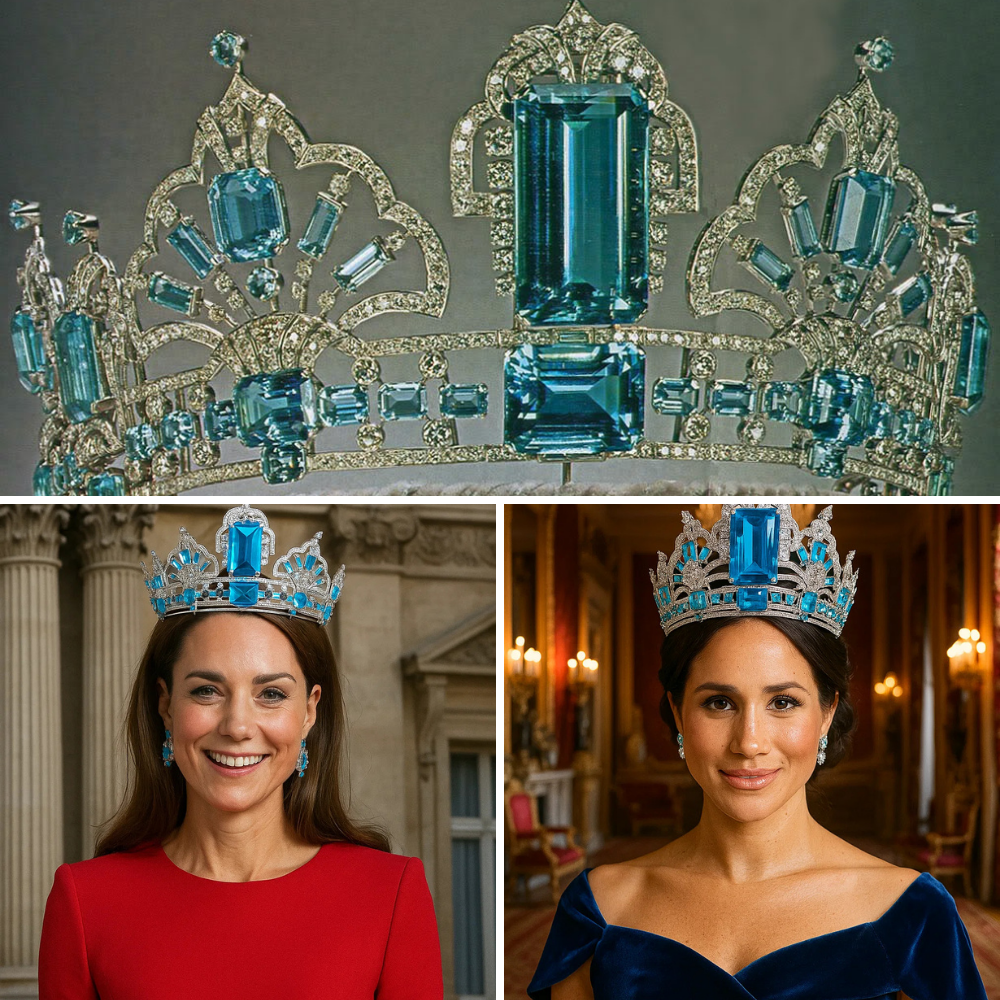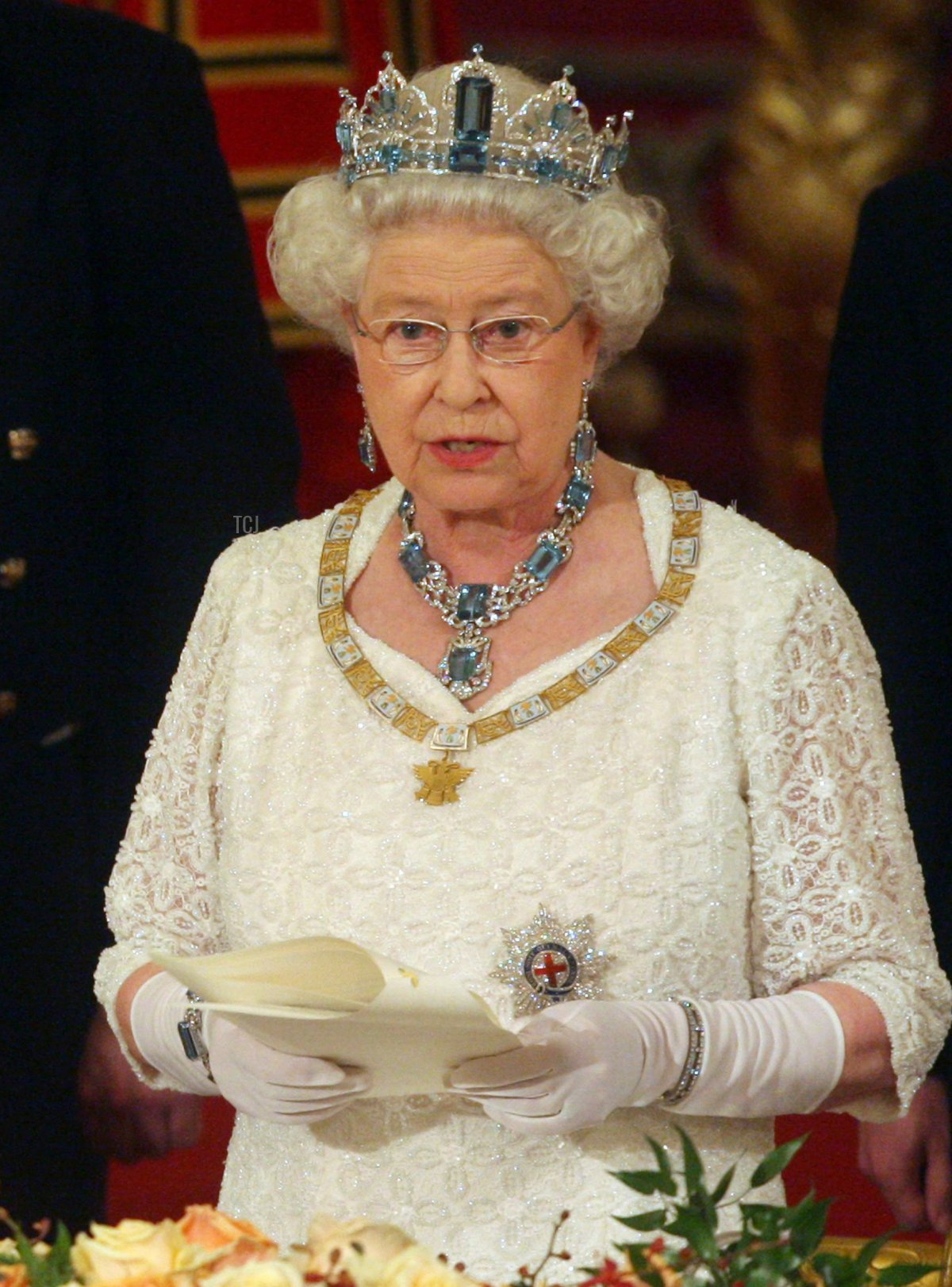
The Brazilian Aquamarine Tiara stands as a shimmering testament to the intersection of diplomacy, craftsmanship, and royal tradition. Originating from a generous coronation gift in 1953, this exquisite piece was presented to Queen Elizabeth II by the President and people of Brazil. The initial offering included a stunning necklace and matching pendant earrings, featuring large, perfectly matched aquamarine stones set amid diamonds. Aquamarines, known for their serene blue hue evocative of ocean waves, are abundantly sourced from Brazil’s mines, making the gift a fitting emblem of the nation’s natural wealth and goodwill toward the young monarch.
Recognizing the potential for a complete parure—a coordinated suite of jewelry—Queen Elizabeth II commissioned the renowned jewelers at Garrard in 1957 to craft a tiara that complemented the existing pieces. The result was a bandeau-style headpiece topped with three vertically set aquamarines, radiating elegance and subtlety. Over the years, the set expanded: in 1958, Brazil added a bracelet and a square aquamarine brooch, both diamond-encrusted. A decade later, in 1968, the Governor of São Paulo gifted additional aquamarines, which were incorporated into hair ornaments. By 1971, the tiara underwent a significant redesign at Garrard, where a larger emerald-cut aquamarine from the original necklace pendant was repositioned centrally, flanked by fan-shaped motifs. This upgrade doubled the tiara’s height, transforming it into a more imposing and majestic crown, perfect for state occasions.
Queen Elizabeth II wore the tiara sparingly but strategically, often reserving it for events tied to Brazil or high-profile diplomatic gatherings. Its debut came at a 1957 Royal Film Performance in London, where the full parure sparkled under the lights. She donned it during her 1968 visit to Brazil, symbolizing strengthened ties between the two nations.

Subsequent appearances included state banquets with U.S. President Richard Nixon in 1958 and various Eastern European leaders in the 1990s. The tiara’s cool blue tones paired beautifully with evening gowns, enhancing the Queen’s poised demeanor. Her last public wearing was in 2017 at a banquet honoring Spanish royalty, a poignant finale to its decades-long service.
Following Queen Elizabeth II’s passing in 2022, the tiara, as part of her personal jewelry collection rather than the Crown Jewels, passed to King Charles III. Royal heirlooms like this are often loaned or bequeathed within the family, preserving their legacy for future generations. Speculation abounds on who might next grace public viewings with this “Crown of Two Worlds.” Queen Camilla, as the current Queen Consort, emerges as a strong candidate. Her role demands pieces of historical significance, and she has already worn several of Elizabeth’s favorites, such as sapphire suites, demonstrating a seamless continuation of tradition. Camilla’s appearances at state events could see the tiara revived, blending old-world charm with modern monarchy.
Alternatively, Catherine, Princess of Wales, represents the next chapter in royal evolution. Known for her elegant style and diplomatic poise, Kate has donned iconic pieces like the Cambridge Lover’s Knot Tiara. The aquamarine’s subtle brilliance would complement her wardrobe, symbolizing youth and continuity. Ultimately, the most suitable wearer might be Camilla, given her seniority and direct link to the throne, ensuring the tiara’s story bridges continents and eras without interruption. This jewel not only adorns but also narrates a tale of enduring alliances, waiting for its next royal custodian to carry it forward.


